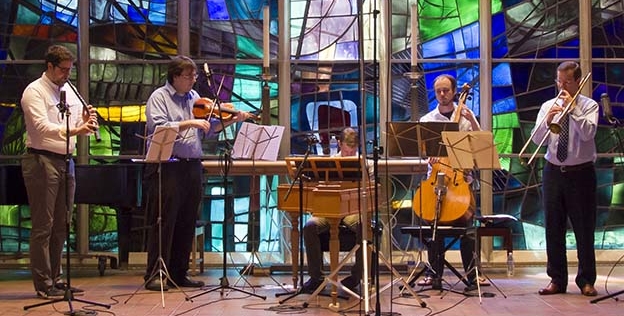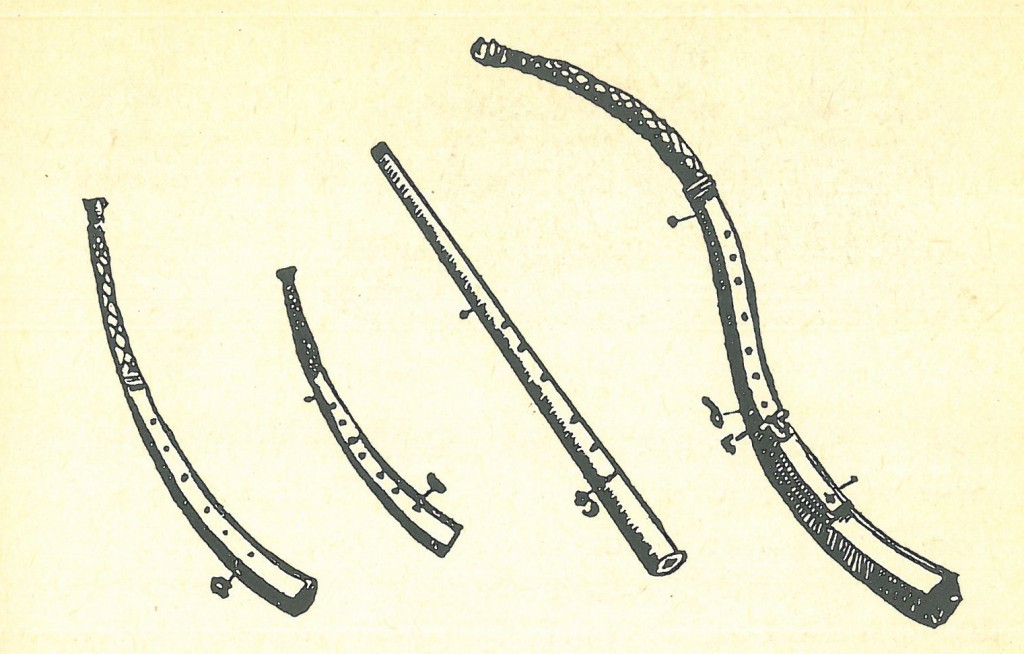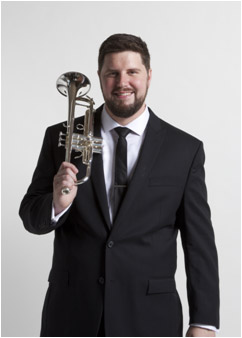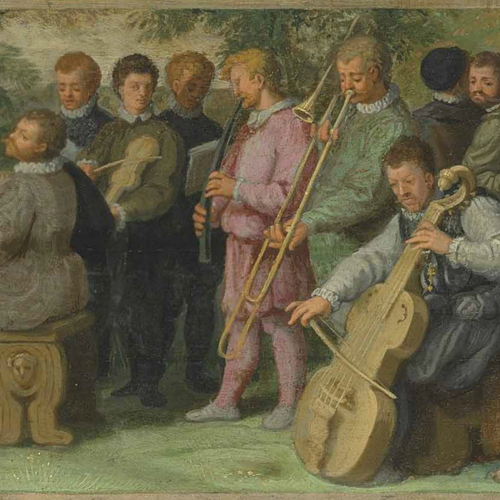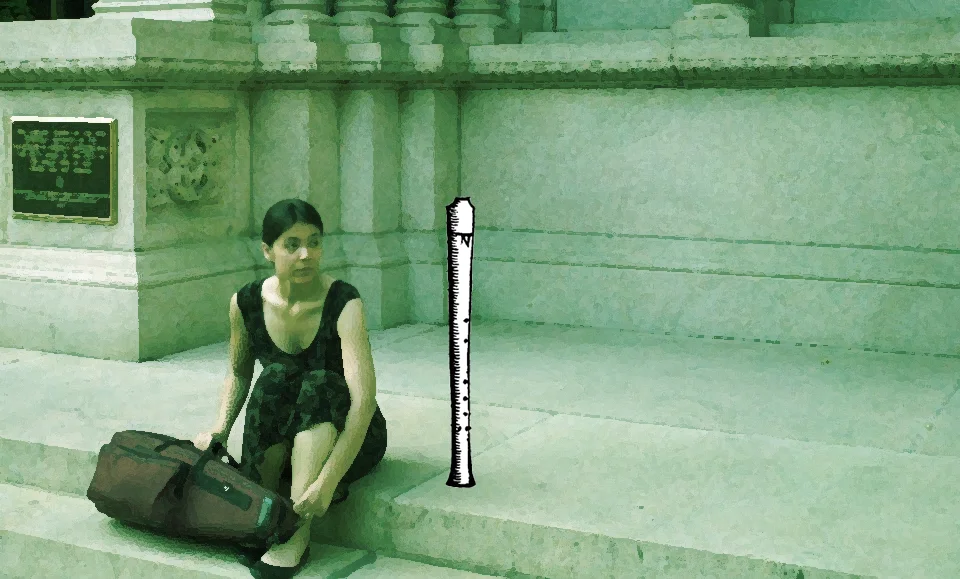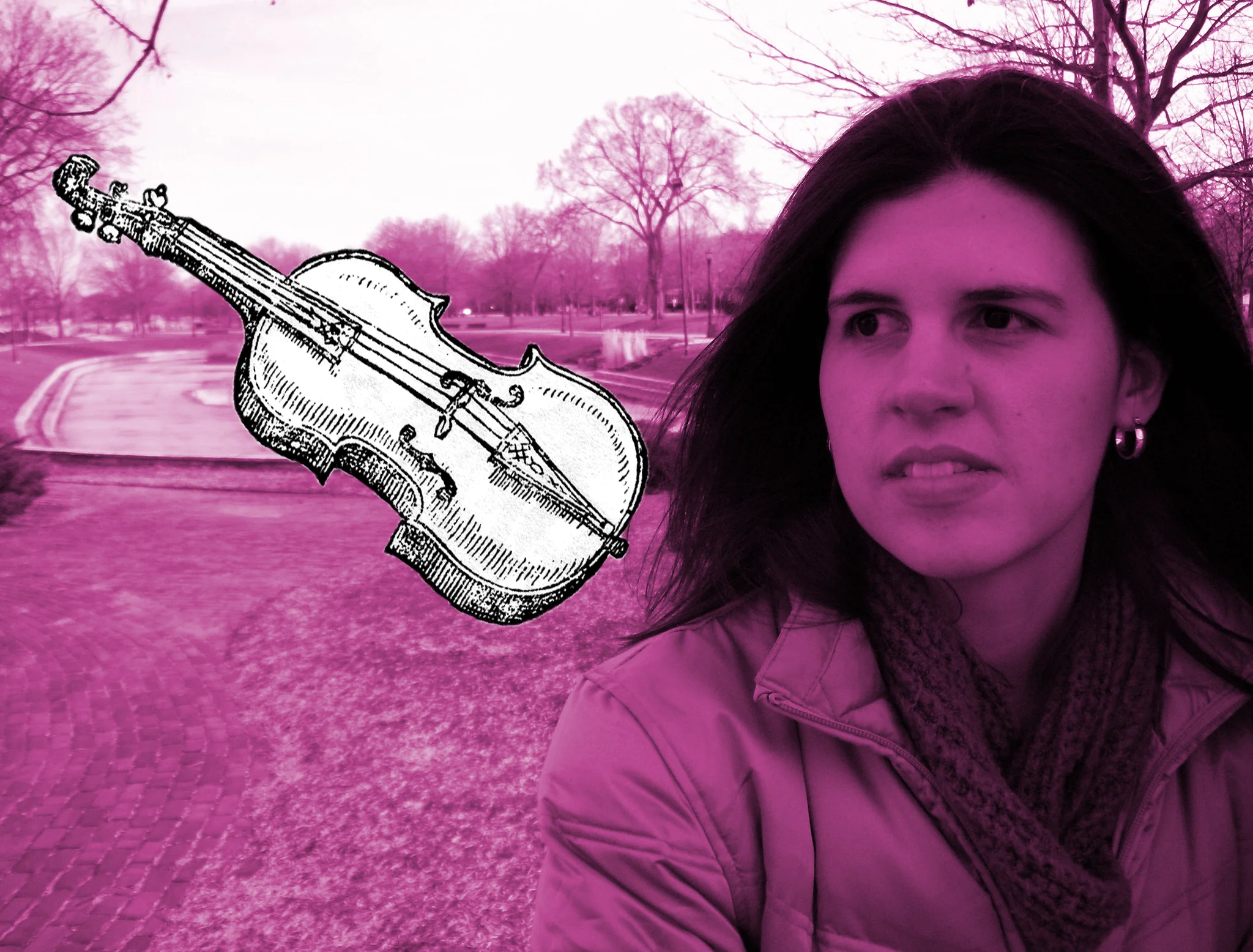Hey! When you're done reading this blog post, head to
to find out more and purchase tickets!
One cool thing about the Chicago Stories project is that we brought together a unique roster of instruments; some have a modern version, like the violin, and some have nothing comparable to anything in existence today. As a member of Gaudete Brass Quintet and Rook, Bill Baxtresser not only plays a slew of new music on the modern day trumpet, but he also delves into repertoire of the 16th and 17th centuries. He does this on a really unique instrument that has no sound or physical shape remotely close to anything we have today. It's called a cornetto.
And no, it's not a brand of ice cream.
Bill Baxtresser, far left, plays cornetto with the boys of Rook, a Chicago early music group. On the far right is Paul von Hoff playing sackbut - he's also playing with us!
Cornetto-what?
Various cornetts from the book by Michael Praetorius: Syntagma Musicum (1616–1620) From left to right: Curved, descant, mute, tenor. Image from: mogensandresen.dk
This curvy cone-shaped instrument can be traced all the way back to the Medieval period, but it enjoyed the height of its popularity in the 16th and 17th centuries. It’s other aliases are the cornett, or the fun-to-say German name zink, which sounds just like it looks!
The mouthpiece is usually made out of a kind of horn, and the body is usually hand carved using one type of wood in two lengthwise pieces. There are up to 10 different woods a maker can choose from to make the body. The density and malleability of the wood can make can make it sound more bright or more mellow. The body is then wrapped with a thin layer of leather - bonus points if you can name any other wind or brass instrument wrapped in a stylish leather in the comment section below. :)
Fun Player Fact #1:
Bill owns a cornetto that is made of the slightly softer plum wood, which gives it a dark sound. But for Chicago Stories, he'll play one that is actually a 3D print! Who knew? There's probably an app for that. :)
Fun Player Fact #2:
To accommodate facial hair, Bill makes sure to trim the top of his mustache. Another avenue to hair design?
Bill with his trusty trumpet.
If you know instruments, then you probably know that they fit into different categories:
- percussion 🥁 : drums, cymbals, cowbell, etc.
- strings (plucked, struck, bowed) 🎸🎻 : piano, guitar, violin, etc.
- woodwind 🎷 : flute, saxophone, clarinet, etc.
- brass 🎺 : trumpet, trombone, tuba, etc.
- voice 🗣 : soprano, alto, bass, etc.
It could be argued that each instrument attracts a certain type of personality… but that’s another blog ;)
One of the best features of the cornetto is that it's a hybrid - it’s not 100% woodwind or brass. To create the sound, the player buzzes their lips on the mouthpiece. In this way, it acts more like a brass instrument. At the same time, like a woodwind instrument, the cornetto has finger holes, and it has a similar fingering system as the clarinet, flute - even that recorder that we all played in elementary school.
The body is curved to allow the player to reach 3 necessary points of contact between the thumb, the little finger, and the pointer finger without over-stretching the hand, making it more easy to play. The cornettist can place the mouthpiece on either the side of the mouth or the center. Bill plays more in the center.
The result of the bras-woodwind hybrid instrument is a very chameleon-like sound, with a superb ability to blend and imitate the human voice. An especially glorious combination is that between countertenor and cornetto. :)
That cornetto was definitely not Photoshopped into this photo of countertenor and BBE Executive Director, Thomas Alaan.
This is not a video of a cornetto with countertenor, but it is still glorious, and you should still listen!
Bill particularly enjoys the expanse of colors and range that the cornetto has to offer. It can produce both a flowing, lyrical sound or the more trumpet-like “punched out” notes. (For fans of physics, the air speed Bill push through the mouthpiece has to be slow in order to get the faster sounding “punched out” notes.) It's also an incredibly flexible instrument in bending pitch. The degree of that manipulation of pitch is more or less depending on how slow or fast the music goes. The faster the music moves, the less bending that needs to happen.
New Music for the Cornetto
As beautiful and unique as this instrument is, there are a few considerations for composers when they are writing out parts.
Tuning
While all instruments have their own way to tune, they all have to be "in tune" with one another for everything to sound good. Cornettos can be pitched "high" or at the traditional A=440 (the usual standard pitch of a piano). If the cornetto is "high" pitch their "A" is actually higher than the "A" of the other instruments! (Again, for physics nerds, they tune an entire half step higher! That means their "A" is pitched at 465Hz).
For Chicago Stories, Bill be using a "high" pitch cornetto. So what does that mean? That means that the part for a cornetto for this particular project is written in a different key than the other instruments so that, when the pitches that come out of the cornetto, they match the rest of the ensemble. This becomes particular interesting in Amos Gillespie’s piece Solo!, which makes extensive use of the cornetto alongside five other instruments.
Notes
Another important consideration is that while the cornetto can play a chromatic scale - a scale with all 12 notes, the instrument is generally built to play in an unequal temperament. This means that the distance (or half steps) between all 12 notes are not the same, and therefore, some keys "sound better" or more "in tune" than others. This tends to be the consideration for all period instruments to work with, not just the cornetto. So, the composer has to consider what key to use, and the affect it will produce as a result. But that's not all! There are some notes the cornetto can 'bend', to help accommodate these differences in half steps.
Luckily, Bill's an awesome player. Because of this, and because he is able to "bend" pitches up or down, these accommodation can perhaps provide more interesting colors and tones, which is to the advantage of both the performer and composer.
Chicago Stories Blog
Join BBE Artistic Director, Brandi Berry, as she explores the instruments, people, and stories being the project through our blog series!
